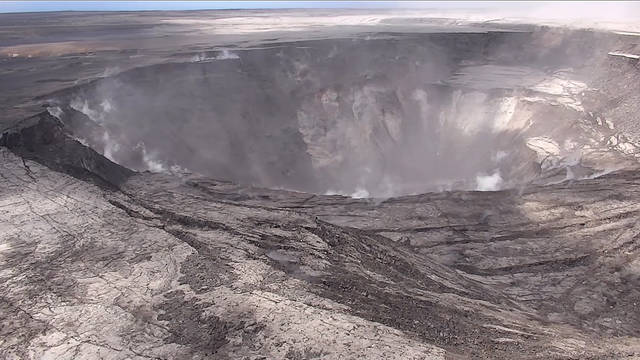KAILUA-KONA — An unoccupied aircraft systems mission on Sunday filmed details of the dramatic changes occurring within Halema‘uma‘u crater at Kilauea’s summit since explosive eruptions of ash and gas and ongoing wall collapse began in mid-May.
KAILUA-KONA — An unoccupied aircraft systems mission on Sunday filmed details of the dramatic changes occurring within Halema‘uma‘u crater at Kilauea’s summit since explosive eruptions of ash and gas and ongoing wall collapse began in mid-May.
Clearly visible are the steep crater walls that continue to slump inward and downward with ongoing subsidence at Kilauea’s summit. The deepest part of Halema‘uma‘u is now over 1,300 feet below the caldera floor.
There are two obvious flat surfaces within the crater that have slumped downward as nearly intact blocks — the shallower one is the former caldera floor and the deeper one is the former Halema‘uma‘u crater floor.
Limited UAS flights into this hazardous area are conducted with permission and coordination with Hawaii Volcanoes National Park. Scientists examine the footage in detail to understand how the expanding collapse area is evolving, the extent of tephra fall and other surface changes.
Video by the U.S. Geological Survey and Office of Aviation Services, Department of the Interior, with support from the Hawaiian Volcano Observatory and Hawaii Volcanoes National Park.





